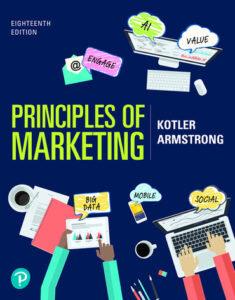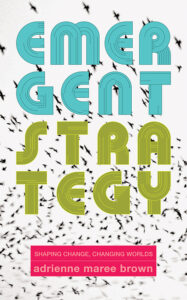Thought leadership is not about how smart you are.
Here at Rootstock, we meet, converse, and collaborate with an abundance of exceptionally smart people. These impressive, inspiring visionaries each have their own particular and powerful intelligence. They are agile and innovative thinkers, talented and skillful creators, experienced and encyclopedic veterans in their fields — people who know what others don’t know, see what others don’t see, and can do so much that seems almost magical to everyone else.
None of this makes them thought leaders.
Though thought leadership is currently a fashionable idea among entrepreneurs and executives, the term is often too broadly applied to thinking that does not lead, leadership that isn’t particularly thoughtful, and other brand differentiators that are neither leaderly nor thoughtful.
So what is a thought leader, really?
Thought leaders do start with some smarts, but they then take their thinking several significant steps further to:
- Strategically select then clearly articulate a unique and cogent thesis of how their entire field can do better.
- Share their original ideas with clients, customers, employees, partners, vendors, and even competitors in their fields.
- Start, nurture, and advance conversations that lead all stakeholders toward a better way.
Thought leadership is always innovative, always communal, and it always leads the way forward above and beyond the best practices of today. Anything less is simply being good at your job. No small feat that, but not thought leadership.
Let’s examine what thought leadership actually is and how a thought leadership position can cultivate a valuable brand. To get there, we’ll begin with the more conventional idea of a brand position.
What is a brand position?
Why is a brand position important?
How does a brand position support growth?
What is a thought leadership position?
What’s the difference between a thought leadership position and a brand position?
How can a thought leadership position support the growth of your brand?
Driven by mission and vision
What is a brand position?
Philip Kotler, who literally wrote the book on Principles of Marketing, defined brand position as “the act of designing the company’s offering and image to occupy a distinctive place in the mind of the target market.” (As quoted in The Branding Journal.)
“the act of designing the company’s offering and image to occupy a distinctive place in the mind of the target market.”
Philip Kotler in “Principles of Marketing”
Why do consumers buy an Apple computer, a pair of Nike shoes, or a can of Coca-Cola? Because each has developed a unique brand position in our minds — one crafted both by their products and by the image they have cultivated for those products — transforming them into something more than “just another” computer, shoe, or can of carbonated sugar water.
At its best, a brand position is subtler and more strategic than simply placing a product or service at the high end of some spectrum along which every competitor is also measured. Stronger, faster, cheaper, easier — all presuppose a context in which other offerings are also strong, fast, cheap, easy… just not as much so as ours.
Brilliant brand positions escape this commodity carnival by claiming a quality or category in which no one else can compete. As Kotler says, they “occupy a distinctive place.”
Patagonia, for example, offers a particular lifestyle for customers with a certain set of values around stewardship of the natural world. BMW sells “the ultimate driving experience.” Trader Joe’s is for shoppers who appreciate a little friendly fun and frivolity — plus fair labor practices — in their grocery shopping experience.
None of these brands try to outdo the competition on the competitors’ home courts. Patagonia doesn’t try to be the apparel outfitter for even more extreme weather than that already dominated by North Face. BMW doesn’t try to out-Tesla the electronic toys of Elon Musk. Trader Joe’s doesn’t pretend to be an even more organic Sprouts.
Powered up with strong brand positioning, each of these companies effectively occupies their own “distinctive place in the mind of the target market,” and, within that space, no other brand can compete.
Why is a brand position important?
An effective brand position lets you rewrite the rules of the game in your industry.
In the early days of personal computers, manufacturers all competed based on RAM, Mhz, pixels, MBs, and other quantitative measures of performance. Then Apple’s famous “1984” ad campaign made the forthcoming release of the first Macintosh an ideological decision. Are you among the complacent cattle or will you join us in the bright revolution of bold creators? Imbued with this powerful brand position, the comparative specs of the first Mac’s CPU were rendered irrelevant.
Brand positioning is how you lift your offering out of the commodity marketplace. How you win customers and clients not based on being more… whatever… than the competition, but by creating, nurturing, and holding a “distinctive place” in their minds that no one else can touch.
How does a brand position support growth?
Once you have and continue to hold your unique position in the minds of your customers or clients, you no longer have to compete on marginal factors such as price or features. And you’ll have more success (or won’t have to work as hard at) winning the right sales, subscriptions, investments, donations, contracts, or retainers.
Your offering won’t be for everyone, but that’s OK, so long as you have crafted your brand position strategically to appeal to an audience of sufficient size and resources to support your sustainable success and growth.
For the right people — the people who value what you offer in your brand position — you’ll be the obvious and often only choice. You’ll also save yourself a lot of wasted effort and resources. Guided by your clear understanding of your brand position, you won’t even try to win the business of those who aren’t well-aligned with what you stand for.
What is a thought leadership position?
Integrating the true definition of thought leadership with this understanding of brand positioning, a thought leadership position is a unique thesis about how an entire field can do better. It is strategically chosen to support the goals of the thought leader, then shared freely with all relevant stakeholders in order to start, advance, and nurture important conversations that lead everyone toward a better way.
“…a thought leadership position is a unique thesis about how an entire field can do better.”
“Leadership” is right there in the term, and this mustn’t be glossed over. We’re not talking about the kind of leadership fixated on winning a first-place medal. You’re not running the same rat race as everyone else, trying desperately to be the fastest rat in the maze. Instead, thought leadership is a kind of servant leadership in which the leader’s goal is to teach, challenge, support, and help everyone excel.
Because that’s what true leaders do: they lead. They don’t just follow the map of known lands that others have drawn before them. They strike out into the pathless wilderness, inviting bold fellow travelers to join them on an adventure.
Thought leaders ask the tough questions, and offer daring answers, fresh insights, transformative innovations. They challenge people to rethink what they want and how they want it. They go deeper than most, down to first principles and fundamental values. They question everything. (And it’s just fine if they don’t have all the answers. That means they’re asking provocative questions worth sharing with their field as part of an evolving conversation.)
With wonder and delight, thought leaders help people see the broader, bigger, deeper possibilities all around us.
And then they strike out again, further into the wilderness, always forward into the unknown. A thought leadership position is found in motion, not in place. Thought leaders keep leading us forward, empowering others to make the maps and codify the camps set up along the way.

What’s the difference between a thought leadership position and a brand position?
So is a thought leadership position just a fancy new name (or a special case) of a brand position?
Absolutely not.
A thought leadership position can reinforce a brand position, but it’s fundamentally different in these several crucial ways:
“Only Us” vs. “All of Us”
A conventional brand position focuses on singular distinctions. “Our approach, our product, our service are unlike any other and cannot be copied. No one can do it like us.”
A thought leadership position is more expansive and inclusive, more generous. “Our approach, our product, our service is better in ways that everyone (or at least many) should copy. Join us as all of us work to do better.”
It’s the difference between walled gardens and open source. Between secret sauce and a recipe exchange. Between magicians in good standing with The Alliance of Magicians and Penn and Teller revealing all (well, most) of their tricks.
Thought leaders share what they know and invite everyone else to do the same.
Lone Wolf vs Wise Guide
A strong brand position marks out the territory that an organization proposes to own and control, free from significant competition and siloed from cross-organizational collaboration. Within the organization itself, there may be complex dynamics of competition and cooperation, but those ranks all close at the well-protected boundaries of the brand.
A thought leadership position ventures into unclaimed lands, inviting the bravest of your field to come along for the journey and welcoming everyone to set up camp where they will. Let’s all go on an adventure, together!

Strategic Plan vs Emergent Strategy
A brand position is one organization’s plan for its own growth and success. It’s a monologue: a top-down, authoritative protocol for occupying and dominating a well-defined area within your field:
“This is how we will win.”
A thought leadership position is always part of a broader conversation. It may have a charismatic leader — maybe that’s you — but it’s not the imposition of one person’s vision on everyone else. Rather, it’s an invitation to a conversation among those within your field who believe you all can do better. And so a thought leadership position is always evolving, not in the isolated musings of one ascetic guru, but through the emergent consensus of the many:
“This is how we all can win.”
(All shout outs to adrienne maree brown for the articulation of this distinction in her brilliant book about social justice movements, Emergent Strategy: Shaping Change, Changing Worlds.)
How can a thought leadership position support the growth of your brand?
With all this talk of open source collaboration and bringing your whole field along to a better place for everyone, you might reasonably be wondering how a thought leadership position can help you and your organization grow. If you lead a for-profit organization, where are the profits coming from if you give all your best ideas to your competitors? If you’re non-profit, how do you make sure your resources serve your own mission well?
The answer is partly (not entirely) a shift from a mindset of scarcity to one of abundance. Competition within the well-defined territory of your field may be a zero-sum game with winners and losers. If someone else must win less in order for you to win more, then you may need secret stratagems to capture the finite flags of your field.
In contrast, a thought leadership vision imagines a future where we all can win more, whatever “more” may mean in the context of your work. More profit. More social good. More artistic creation. More connection and satisfaction. If you lead toward greater abundance, there can in fact be more for all. A rising tide really does raise all seaworthy ships.
But a thought leadership position can also help you claim “more of the more,” because it changes the conversation with your potential and current customers, clients, investors, funders, and other stakeholders as they consider their choices.
With a thought leadership position, no longer will you be answering the query, “Are you better at the best practices already established in your field?” That’s a question asked by conventionally-minded clients evaluating commodity vendors. It walls you inside well-manicured gardens, where your marginally superior mastery of the familiar — or cheaper prices for the same — are your only play in the raucous rumble of the melee.
Instead, your position issues an invitation to wander outside the garden and into the wilds of what could be. It proposes a better question to a more imaginative and open-minded audience: “Whose innovative thinking is revealing a better way?” Out in these pathless places of new opportunity, the establishment experts have no advantage. It’s the thought leaders who show us the way.

Not everyone will follow you outside those gates, and that’s OK. You’ll save yourself a lot of time, resources, and frustration by ignoring all the balderdash within the boxwood barriers. For the right people — the people willing to question convention and intrigued by original thinking — you’ll be the obvious and often only choice, the one person they can trust to lead them confidently into the unknown.
Driven by mission and vision
Before you embark on this positioning journey, note that to play the thought leadership game purely for your own brand’s advancement will only be temporarily successful, at best. Thought leadership will advance your brand. But pursuing it for that reason alone is not sustainable.
If you don’t actually care about anyone beyond your own organization, thought leadership is going to be exhausting. It’ll mean constantly calculating your contributions and endlessly finessing your engagement with your field. Giving away just enough of your thinking to brand yourself a guru, but holding back the rest so you can collect the lion’s share of the rewards.
True thought leaders are driven by a greater mission and pulled toward a grander vision of transformation for all. They share their best thinking and welcome each voice to the conversation, energized with an authentic desire to help everyone do better.
If you don’t feel that drive, building your thought leadership position will surely burn you out. But if that fire does blaze within you — if you have a deep, inner imperative to transform your field for the better — your thought leadership position offers both abundant opportunities for brand growth and priceless satisfactions.
It will take time and effort to nurture and grow your thought leadership position, but that time will be well worth it. It’s how you’ll champion the change you want to see in your field.
Where do you want your best thinking to take you? Where do you hope to lead us all?

Interested in developing your own thought leadership position? We can help. Learn more about Rootstock’s Radicle Report.


